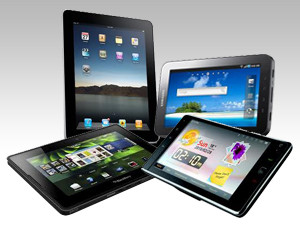
Tablets now account for a larger percentage of global Web traffic than smartphones, according to the latest Adobe Digital Index report.
The report is based on an analysis of more than 100 billion visits to over 1 000 Web sites worldwide. The analysis showed tablets accounted for 8% of traffic, while smartphones accounted for 7%.
Last year, Adobe forecast that tablets would overtake smartphones in terms of Web traffic by early 2013. At the time, traffic from tablets was seen to be growing at 300% year-on-year.
Adobe says: "We've been keeping a close eye on how quickly tablets have taken off. Just a year ago, in January, we uncovered that visitors using tablets spend 54% more per online order than their counterparts on smartphones, and 19% more than desktop/laptop users. During the past holiday shopping season, we saw that 13.5% of all online sales were transacted via tablets.
"Now we know that not only is tablet traffic more valuable in terms of e-commerce and engagement, tablets have also become the primary device for mobile browsing."
Adobe says the reason for tablets driving more Web traffic than smartphones is due to the fact that they are the preferred devices for more in-depth Web visits.
"Smartphones remain much more common, but the tablet form factor makes it ideal for browsing. Whether it be leisurely surfing the Web, engaging with video, or shopping online, on average Internet users view 70% more pages per visit when browsing with a tablet compared to a smartphone," says the report.
While traffic from tablets and smartphones is growing, PCs still account for the lion's share of Web traffic (84%). Tablets are, however, seeing a particularly steep growth trajectory.
The report says tablet growth was consistent through 2012, with all countries included in the analysis seeing the tablet share of Web traffic double over the last year.
Adobe says the findings have important implications for marketers and Web sites in general. "Consumers all over the world are trying out their tablets for the first time and it only takes one bad Web site experience for them to decide to go elsewhere."
New capabilities
Adobe adds that a smartphone-optimised site is not the same as a tablet-optimised site and marketers must be aware of the different ways consumers use different devices.
"They might turn to their phone to check their bank statement or to stream music, but use their tablet to shop for a new couch. They want more personalised experiences. When they opt for their tablet they aren't just price comparing, they're purchasing. They aren't just watching a video clip; they're exploring and engaging with content. They'll be disappointed if they're not able to take advantage of the smooth touch interface and awesome screen resolution of their new toy."
Adobe also notes that an important consideration is the fact that many new tablets are coming in smaller form factors with added capabilities, such as the ability to make phone calls.
"Marketers can't rely on screen size anymore to determine and deliver the most appropriate experience. They'll need to pay attention to connection type (WiFi vs cellular), and referral source along with form factor to prioritise which options to offer the user."
Share